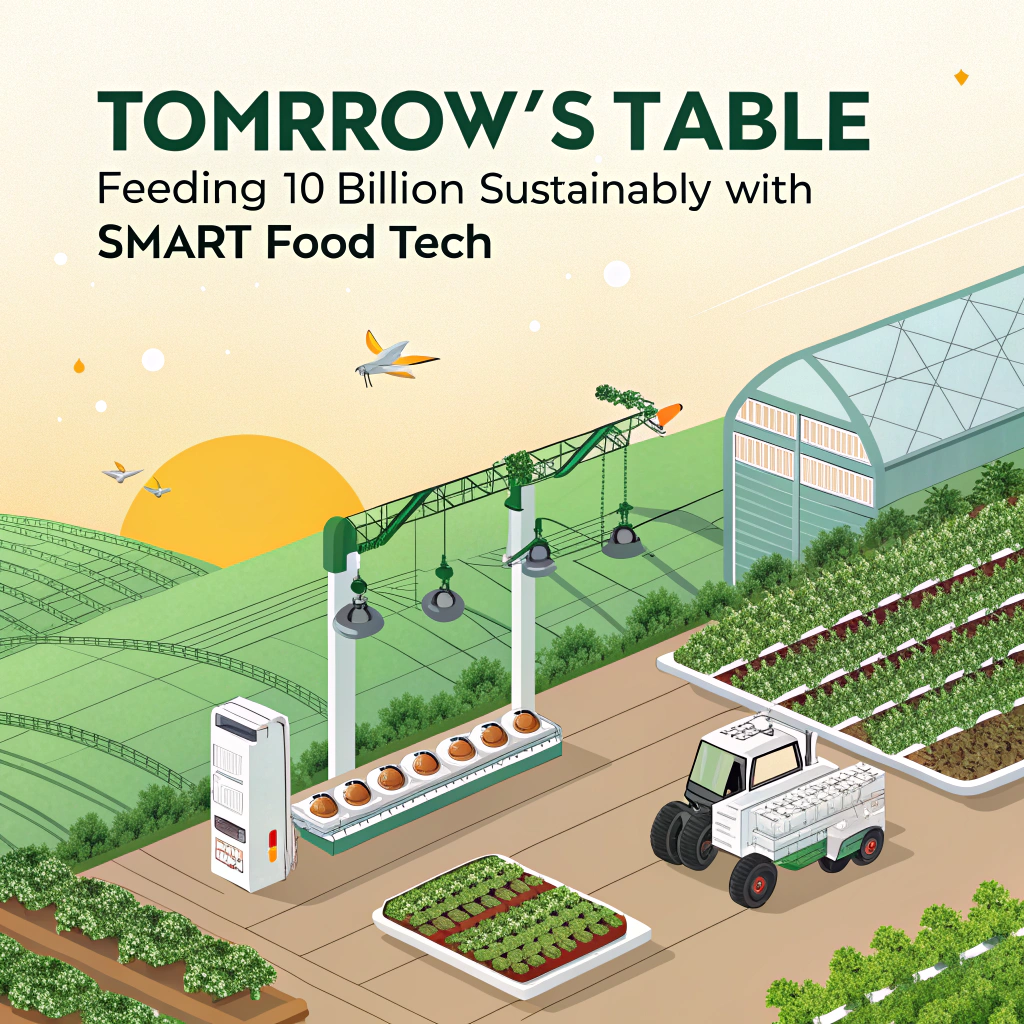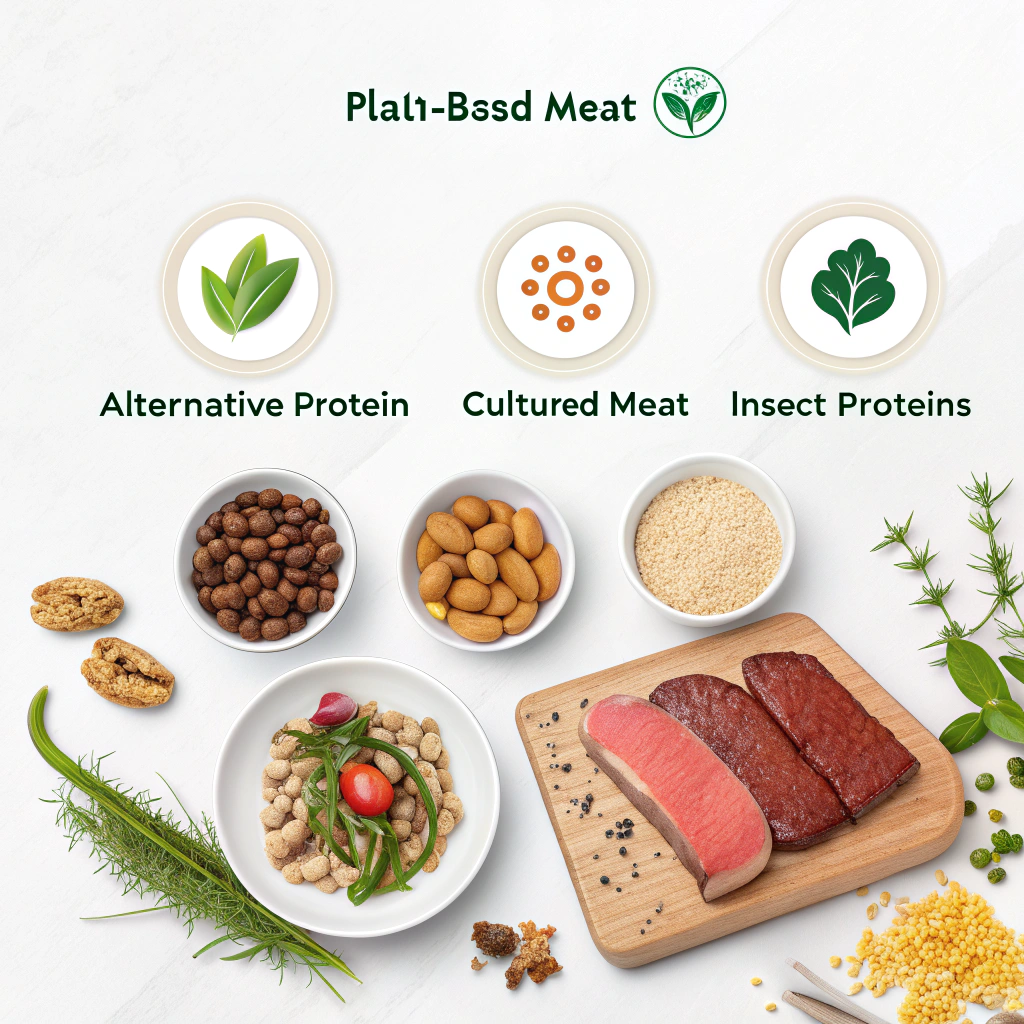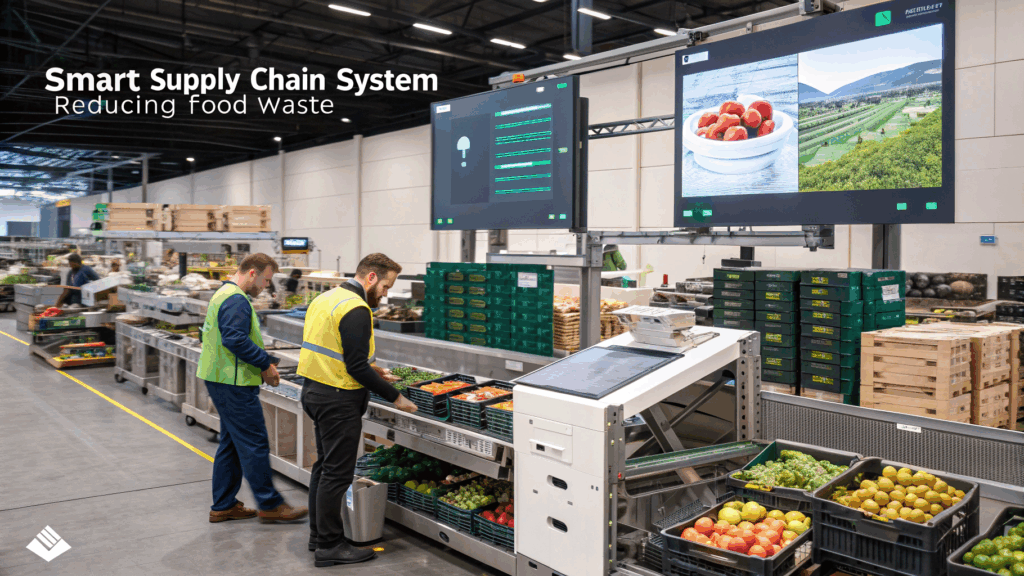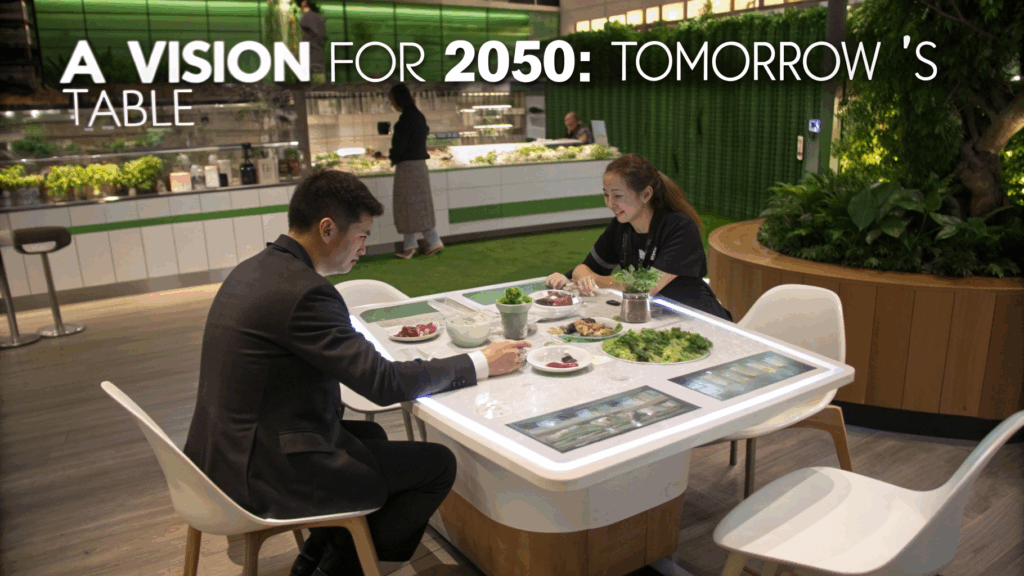Tomorrow’s Table: Feeding 10 Billion Sustainably with Smart Food Tech
Introduction: A Growing Appetite in a Shrinking World

By 2050, Earth’s population is projected to reach 10 billion. Feeding that many people sustainably is one of the greatest challenges humanity has ever faced. Our current food systems—rooted in industrial agriculture, intensive animal farming, and long-distance transport—are already straining under the weight of environmental degradation, water scarcity, and climate change.
But a new food revolution is on the horizon. Smart food technology—an umbrella term for innovations in agricultural science, biotech, data systems, automation, and nutrition—is reshaping the future of farming and food consumption. From vertical farming and AI-driven precision agriculture to lab-grown meat and personalized nutrition, these solutions promise to increase yields, reduce emissions, and improve health outcomes without exhausting the planet’s resources.
This article explores the ecosystem of smart food technologies and how they can help feed a growing population while preserving Earth’s fragile ecosystems.
1. The Food Crisis: Limits of the Current System
Overuse and Depletion
The modern agricultural model is highly productive—but unsustainable. Agriculture accounts for:
- 70% of global freshwater usage
- About 30% of greenhouse gas emissions
- 80% of deforestation worldwide
The Green Revolution of the 20th century boosted yields through synthetic fertilizers, pesticides, and mechanization. But it also led to:
- Soil degradation
- Biodiversity loss
- Overreliance on fossil fuels
Climate Threats
Changing weather patterns—droughts, floods, unpredictable seasons—make growing food less reliable. Traditional crops may no longer thrive in the regions where they’ve historically been grown. In this scenario, tech-assisted adaptation becomes essential.
2. Smart Agriculture: Farming with Data and Precision
Precision Agriculture
Powered by IoT sensors, drones, and satellite imaging, precision farming helps farmers make data-driven decisions:
- Monitor soil moisture and nutrients
- Detect early signs of disease or pest infestations
- Apply fertilizers and water only where needed
This reduces waste, improves yields, and helps regenerate soil over time.
AI and Machine Learning
AI tools can forecast crop performance, analyze market demand, and suggest optimal planting schedules. For instance:
- Climate FieldView allows farmers to track field health in real time
- Agro AI platforms help optimize fertilizer and pesticide use
Machine learning helps adapt crop management to shifting climate patterns—crucial for resilience in an uncertain future.
3. Vertical Farming and Controlled Environment Agriculture
Farming Without Fields
Vertical farms use stacked layers and LED lighting to grow crops indoors with hydroponics, aeroponics, or aquaponics:
- 95% less water than conventional farming
- No pesticides or herbicides
- Year-round production, regardless of weather
Companies like AeroFarms, Plenty, and Infarm are deploying these systems in urban centers to shorten supply chains and reduce food miles.
Urban Food Hubs
By placing farms within cities, food can be harvested and delivered within hours. This reduces:
- Transportation emissions
- Storage costs
- Spoilage
It also brings agriculture closer to consumers, offering transparency and traceability.
4. Lab-Grown and Alternative Proteins

Why Meat is a Problem
Traditional livestock farming contributes disproportionately to environmental harm:
- 14.5% of global greenhouse gas emissions
- Huge land and water usage
- Animal welfare concerns
Cultivated Meat
Also known as lab-grown meat, cultivated meat is produced by growing animal cells in bioreactors:
- Requires no slaughter
- Uses up to 90% less land and water
- Generates fewer emissions
Startups like Upside Foods, Mosa Meat, and Aleph Farms are pioneering this field. In some countries, these products have already reached restaurant menus.
Fermentation and Plant-Based Alternatives
Precision fermentation allows microbes to produce:
- Dairy proteins (like whey and casein)
- Egg proteins
- Fats and flavorings
Companies like Perfect Day and Clara Foods use this technique to create products indistinguishable from their animal counterparts—with a fraction of the environmental cost.
Insect and Algae-Based Foods
High in protein and efficient to produce, insects and algae offer low-footprint alternatives to meat. For example:
- Crickets require 12 times less feed than cattle
- Spirulina algae grows quickly and is nutrient-dense
These could become essential parts of global food systems—especially in regions facing resource constraints.
5. Gene Editing and Resilient Crops
CRISPR and Smart Breeding
Gene-editing tools like CRISPR-Cas9 allow scientists to:
- Boost crop yields
- Enhance nutritional value
- Improve resistance to drought, pests, and disease
Unlike GMOs, gene-edited crops can avoid transgenic changes, which may ease regulatory barriers.
Biofortification
Some smart crops are tailored for improved nutrition. For example:
- Golden Rice is enriched with Vitamin A
- Iron-fortified beans fight anemia
- Zinc-rich wheat improves immunity
These crops can address “hidden hunger”—nutritional deficiencies that affect billions.
6. Smart Supply Chains and Food Waste Reduction

Blockchain and Traceability
Blockchain tech can trace food from farm to fork:
- Identify sources of contamination
- Ensure ethical labor practices
- Increase transparency for consumers
For instance, IBM’s Food Trust system allows supermarkets to verify where every piece of produce originated and how it was handled.
AI for Inventory Management
AI-powered systems help retailers:
- Predict demand
- Optimize stock levels
- Reduce spoilage
Food waste accounts for up to one-third of all food produced. Smart tech can turn that around—saving resources and ensuring more food reaches people’s plates.
7. Personalized and Functional Nutrition
Smart Diets
As wearable health tech (like Fitbit or Apple Health) tracks our biology, food can become more personalized. AI-driven nutrition apps recommend:
- Macronutrient profiles
- Timing for meals
- Supplementation based on blood tests or DNA
Future diets may include meals 3D-printed or prepared by AI based on our individual needs, activity levels, and medical conditions.
Functional Foods
Beyond calories and taste, foods are being designed for purpose:
- Probiotics to boost gut health
- Nootropic beverages for cognitive function
- Fortified snacks for energy or sleep
Smart food is shifting from passive nutrition to active wellness.
8. Empowering Farmers and Communities
Tech for Smallholders
Over 500 million small farms feed two-thirds of the global population. Smart tech can:
- Connect them with digital marketplaces
- Provide weather forecasts via SMS
- Enable mobile micro-loans for tools or seeds
Apps like AgUnity empower remote farmers to track production and reach fair markets.
Community Vertical Farms
Urban cooperatives can run local vertical farms, combining food production with job creation, education, and economic uplift.
Gender and Inclusion
Women and indigenous farmers, often excluded from high-tech agriculture, can benefit from inclusive design and access policies.
Smart food tech must be democratized—not just for large-scale agribusiness, but for everyone who grows and eats.
9. Policy, Ethics, and Public Trust
Navigating Regulation
Innovations like gene-edited crops or lab-grown meat face complex regulatory landscapes. Public agencies must:
- Set clear safety standards
- Support R&D
- Prevent monopolization by tech giants
Ethical Concerns
Smart food raises ethical questions:
- Should we patent life forms?
- Will rural jobs disappear with automation?
- Can tech respect cultural food traditions?
Stakeholder dialogue, transparency, and inclusive governance will be crucial.
Building Public Trust
Consumers may hesitate to eat lab-grown meat or gene-edited rice. Winning hearts (and tastebuds) will require:
- Education campaigns
- Honest labeling
- Transparent sourcing
Trust is built on transparency and shared values—not just technology.
10. A Vision for 2050: Tomorrow’s Table
Imagine this in 2050:

A family in Nairobi eats a dinner of lab-grown chicken, hydroponic kale, and fermented egg protein—grown in a community farm a few blocks away. Their phone shows their nutritional intake and offers meal suggestions. Nothing was flown in from overseas. Nothing was wasted.
The table is set not just with food—but with innovation, cooperation, and sustainability.
Conclusion: Cultivating a Regenerative Future
Feeding 10 billion people sustainably is not a single innovation—it’s a symphony of technologies, policies, and cultural shifts. Smart food tech can be the conductor, guiding us toward:
- Less waste, more nutrition
- Lower emissions, higher yields
- More equity, better health
But technology is not a panacea. It must be implemented thoughtfully, with attention to equity, ecology, and ethics. We must build systems that regenerate—rather than deplete—natural and human capital.
The choices we make today will shape the plates of tomorrow. With smart food technology, we can ensure that everyone—regardless of geography or income—has a seat at the table.

